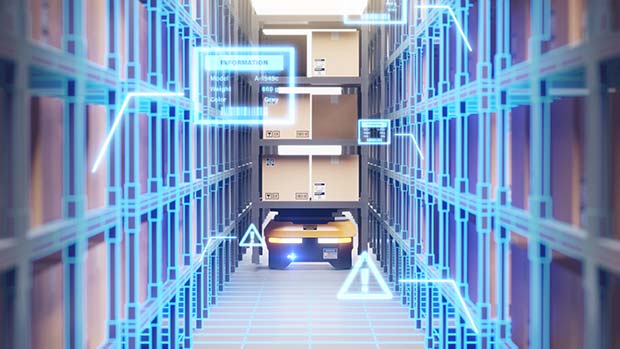Artificial intelligence (AI) as a discipline has been around for a few decades. It operates behind the scenes but is already part of everyday life. When you are searching for an item to buy online for yourself you may be offered some suggestions to help you decide. That’s AI at work. Only recently have we seen it getting real traction in manufacturing and distribution businesses. AI-driven software is allowing organizations to solve complex problems in their supply chains more efficiently or effectively using smart computer algorithms.
 From demand planning through procurement to reverse logistics we are already seeing successes. Rolls Royce uses AI algorithms on its ships to sense what items are around them in the water so that they can classify them according to the danger they may pose. In logistics, UPS, FedEx and others are using AI-powered GPS tools to determine the most efficient routes for their fleets. The main ways AI is being used is to:
From demand planning through procurement to reverse logistics we are already seeing successes. Rolls Royce uses AI algorithms on its ships to sense what items are around them in the water so that they can classify them according to the danger they may pose. In logistics, UPS, FedEx and others are using AI-powered GPS tools to determine the most efficient routes for their fleets. The main ways AI is being used is to:
1. Automate processes and actions so they can operate without the need for human intervention
2. Assist the human decision-making process in day-to-day operations by interpreting data and reducing errors
AI in action
AI is being applied both internally within enterprises as well as to improve operations between themselves and their supply chain partners. Internally, historical sales information can be used to identify patterns and forecast demand using intelligent algorithms. This information can then be shared with customers. AI is being used in procurement to aid expenditure (spend) classification. Companies need to understand who spent what and with whom. “Dirty” and unclassified data can be cleansed and enriched using keywords and tied to existing categories of spend for quicker decision-making. Accurate spend data is vital to develop effective category, sourcing, and supplier management strategies.
AI in distribution centres
In DCs, AI is behind many innovations: the automation of picking systems, driverless forklifts and intelligent robots. Wearables such as smart glasses. watches and voice-activated headsets are proving more efficient compared to mobile or handheld technologies. Digital cameras are routinely used to monitor stock levels and provide alerts for restocking. AI algorithms can even forecast when orders will arrive which means pallets can be placed in readiness in the most efficient positions.
AI in logistics and transport
Transport operations generate huge volumes of data. AI provides us with the analyses and learning we need to gain better insights into operations. It is possible to use this knowledge to automate load forecasting and streamline route planning and vehicle scheduling for faster deliveries. The latest transport management systems (TMS) include AI functionality that provides real-time information from raw data on which key decisions can be based. Shippers, carriers, suppliers, and consumers are all benefitting from AI-driven TMS technology.
There are still some challenges
1. The cost and integration of new software are significant. Only large organizations can afford the investment required to design their own AI solutions, and adapt and update their I.T. systems. Mid-size companies and smaller companies are likely to opt for third-party software-as-a-service solutions (SaaS) that include AI technology. There is integration required there too.
2. We need to manage the human interface. Users still need visibility into the decision criteria to enable them to understand issues that the AI-based system cannot solve. Managers must be able to monitor the data and even override AI decisions when necessary.
3. Supplier relationship management (SRM) has traditionally been a human activity based on incomplete or unreliable data. AI will help supply chain leaders solve SRM challenges around supplier performance, risk and governance.
4. AI and robotics improve productivity and release people from performing mundane and unfulfilling tasks. But there are still concerns that AI may result in job losses. However, new jobs are continuing to be created, including those that are customer-facing that need the human touch.
For further information visit www.sccgltd.com or call our head office +44 (0)1926 430 883




Comments are closed.